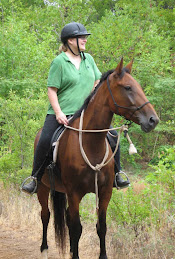
The honey bee is marvelous insect that is crucial to the production of at least one-third of the world’s food supply, but honey bee populations are on the decline -- a problem referred to as colony collapse disorder (CCD). It is serious issue since an estimated 36 percent of all U.S. bee colonies have disappeared over the past several years.
Within 18 months of learning about CCD, I fulfilled a long-time dream of moving to a “ranchette” in Denton County, just north of Dallas. That meant I had space to help boost the honey bee population, and I decided to get a couple of hives.
It’s difficult to raise something you know zilch about. I can attest to that from my personal experience with pet rabbits that were seriously into filicide. To avoid disappointment, I went in search for serious beekeeping guidance. Although I have since met people who are successful self-taught beekeepers, I highly recommend finding a mentor, a class or a beekeeping organization to help you get started.
Within 18 months of learning about CCD, I fulfilled a long-time dream of moving to a “ranchette” in Denton County, just north of Dallas. That meant I had space to help boost the honey bee population, and I decided to get a couple of hives.
It’s difficult to raise something you know zilch about. I can attest to that from my personal experience with pet rabbits that were seriously into filicide. To avoid disappointment, I went in search for serious beekeeping guidance. Although I have since met people who are successful self-taught beekeepers, I highly recommend finding a mentor, a class or a beekeeping organization to help you get started.
My first discovery was the Collin County Hobby Beekeepers' Association (CCHBA), the largest group of beekeepers in Texas. This is a growing organization of city, country and suburban dwellers who raise bees for fun and/or for profit. Members meet at 6:30 p.m. on the second Monday of each month at the Heard Natural Science Museum and Wildlife Sanctuary in McKinney. Get there early or risk standing for the entire meeting. Dues are cheap, $15 a year for a family, and information is bountiful.
In January 2008, I discovered that CCHBA sponsors an annual five-session workshop (one half-Saturday per month from January through May) called “Mastering the Art of Beekeeping.” Unfortunately, the 2008 class had already started, and I had to wait a year for the next one.
The workshop is conducted by John Talbert, veteran Collin County beekeeper and retired Raytheon engineer. The owner of Sabine Creek Honey Farm in Josephine, Texas, Talbert began beekeeping in 1985 and been very active, serving a president of CCHBA, president of the Texas Beekeepers Association and a member of the Board of Directors for the American Beekeeping Federation. I paid $135 to attend Talbert’s 2009 workshop and left south Denton County at 6 a.m. on Jan. 24 to attend the first session.
With no offense community residents, Josephine, Texas, is in “no damn where,” and it took me a full two hours to drive there. I was feeling pretty sorry for myself until I learned that another couple had traveled all the way from Abilene for the class. Apparently, reliable beekeeping information is not easy to come by no matter where you live in Texas.
The first class covered beekeeping basics: bees, woodenware and personal protective gear.
You know that old saying “I was behind the door when they handed out the brains.” Well, I was sick at home when they handed out the beehive-making kits at the second class, and I strongly advise anyone who registers for Talbert’s workshop to attend every session. Putting together my two bee hives was enough to make me jump off a bridge … or get a divorce since it was my tolerant husband who actually managed the project, muttering constantly about the lack of detailed instruction. When he had finished – and created two beautiful bee hives – someone asked him if he had used glue as well as nails. Of course, he didn’t use glue since none came in the kit and nothing about glue was mentioned in the “how to” instructions. He was not happy.
The third class was in March and involved returning the completed bee hives, now painted a heat-reflective color such as white or silver, to the Josephine honey farm. One of my classmates painted her two hives different shades of lavender. I have no idea whether that will impact the amount of honey her bees produce, but they were definitely festive.
The fourth class was held at the end of April and involved driving my two bee hives home in my Jeep. Please come back soon to read Part 2: The Bees Homecoming.



